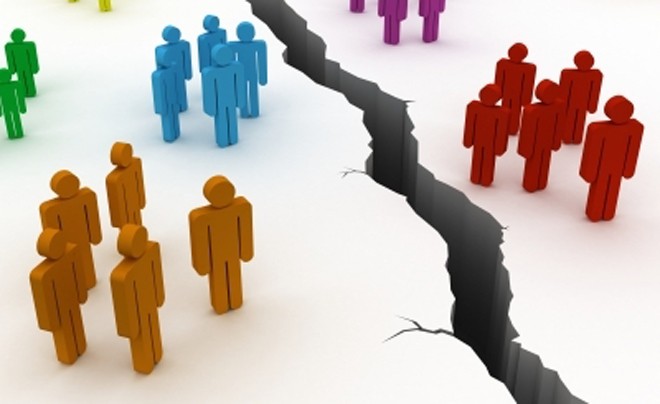

Mubashir Akram, an Islamabad-based political communication specialist and director of Shaoor Foundation for Education and Awareness, an NGO, thinks living without the Internet is impossible.
"Not only my business depends almost totally on the Internet and mobile phone but I also use them for socialising. I spend the whole day using the Internet on my laptop or mobile," he tells TNS.
During the last one decade or so, the Internet has changed his lifestyle altogether. "I start my day with the Internet and mobile and ends with it. I used to spend a lot of time with my friends almost every evening but now I only connect with most of them through the Internet," he says.
"There are some who do not use a mobile phone but use the Internet. Even my elderly mother uses it to Skype with my brother who lives abroad," he says. Mubashir is one of the 30 million Internet users (15 million Internet users browse the web using their mobile phone).
Still, the digital divide -- the gap between people with access to the Internet and those who have no or limited access -- remains a major issue in Pakistan. The International Telecommunication Union (ITU), UN’s specialised agency for Information and Communications Technologies (ICTs), puts Pakistan among a group of 39 least connected countries (LCCs).
In these LCCs, most ICT access and use is limited to basic voice and low-speed data services. "While a number of LCCs have reached relatively high levels of mobile-cellular penetration, more advanced ICT services, including broadband Internet access, remain very limited," reads ITU annual report 2013.
ITU puts Pakistan among the countries where fewer people are able to benefit from the potential of the Internet. "In some economies, including Pakistan, Rwanda and Djibouti, fewer than one in ten people are online," reads its 2013 report. According ICT Development Index (IDI) of ITU, which ranks countries’ performance with regard to ICT infrastructure and uptake, Pakistan ranked globally on 129 out 157 countries while at 26 out of 28 countries in the Asia-Pacific.
Pakistan, a country of 180 million people where 36 per cent of population lives in urban centers, has not more than 16 per cent (by the most liberal estimates) of its population using the Internet. This great digital divide in the country is a huge issue.
More than half of the households have a tv set. Teledensity -- telephone lines per 100 inhabitants, be it fixed PTCL, wireless loop lines or mobile phones -- went up from 12 to 77 per cent between 2005 and 2013. There were more than 130 million cellular phone subscribers in the country by end of 2013.
The Sustainable Development Policy Institute (SDPI), an Islamabad-based research institute, measured the ‘gender digital divide’ in 2009 in rural areas of four districts -- Batagram, Bolan, Muzafargarh and Tharparkar -- from four provinces of the country. The study found that almost half of the surveyed households owned at least one mobile phone set. The sets are largely owned by their husbands, fathers and brothers. More than 40 percent of all female respondents indicated that they required permission to make calls. Far less women, according to the study, have access to ICTs outside of their home. "Only 28 compared to 43 per cent of men," it reads.
Experts believe that despite the exponential increase in the availability of ICTs, differences in levels and quality of ICT access remain between different population groups. "Only urban cities such as Karachi, Lahore, Islamabad and Peshawar have access to better quality broadband services.
The story in other areas is different. Nighat Dad, Executive Director of Digital Rights Foundation, an Islamabad-based advocacy and research organisation, says, "Filling the gap of digital divide in the country is not on the agenda of the government. We have no data available in Pakistan to define digital gap on the basis of urban-rural, gender, literacy and demography."
Nighat says only physical presence of ICTs equipments will not bridge the gap. "The government needs to make it affordable and accessible. It involves restructuring the telecommunications sector in a way that broadband benefits can flow to all parts of the country. But our governments are more interested in blocking the online content." she says.
The government has taken some half-hearted steps to fill the divide between urban and rural areas but they have achieved no results. The government established a Universal Service Fund in 2006, which consists of contribution by the Telecom companies with an aim to promote the development of telecommunication services in un-served and under-served areas throughout the country.
In 2007, the National ICT Research and Development (R&D) Fund was established with the purpose to support research and development projects proposed by the industry and academia. "Both these funds have failed to achieve their goals and bridge the digital divide," says Nighat.
Availability of next generation mobile communication technologies can also play a big role in bridging this divide. Pakistan is among those few countries in the world still deprived of 3G/4G mobile communication technologies.
The World Economic Forum’s Global Information Technology Report 2013, which ranked Pakistan 105 out of 144 countries in terms of overall networked readiness, reads that for a given level of mobile penetration, a 10 per cent increase in 3G penetration increases GDP per-capita growth by 0.15 percent.
"Even Afghanistan has 3G technology. The world is already close to installing 5G system but we in Pakistan do not even have 3G. This technology would help to decrease the digital divide in the country to a greater extent," Nighat says, adding, "bureaucratic hurdles are causing problem for the development of 3G or 4G networks in the country."